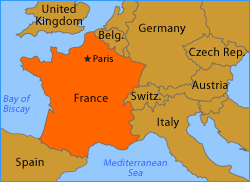The public-housing projects of French suburbs are filled with Arab Muslims, most of whose families were originally from North Africa. Muslims from other African nations have also settled in France, but the bulk of French Muslims trace their roots to Morocco, Algeria, or Tunisia. On average, North Africans have struggled in France; Muslims represent not quite 10 percent of the nation, but half of France’s prison population. Some observers compare the circumstances of French Arabs to those of African Americans in the slums of northern U.S. cities in the 1960s and 1970s.
Muslim schoolgirls were at the forefront of a recent public debate over the right to wear headscarves in public schools. The controversy about the nature of secularism in France evolved into a national conversation on multiculturalism, particularly the role of Islam. As French citizens, Muslim women have equal rights — a law banning the headscarf in schools also applies to other religious items such as crucifixes and yarmulkes — and some have thrived academically and professionally. Yet equal protection under the law does not always translate into safety. Rates of violence against women, particularly rape, are disproportionately high in Muslim neighborhoods; victims are likely to be blamed for bringing dishonor to their families, so most rapes go unreported. (Some Muslim women wear the headscarf in hopes of escaping the attention of rapists.) Gang rapes are commonplace.



